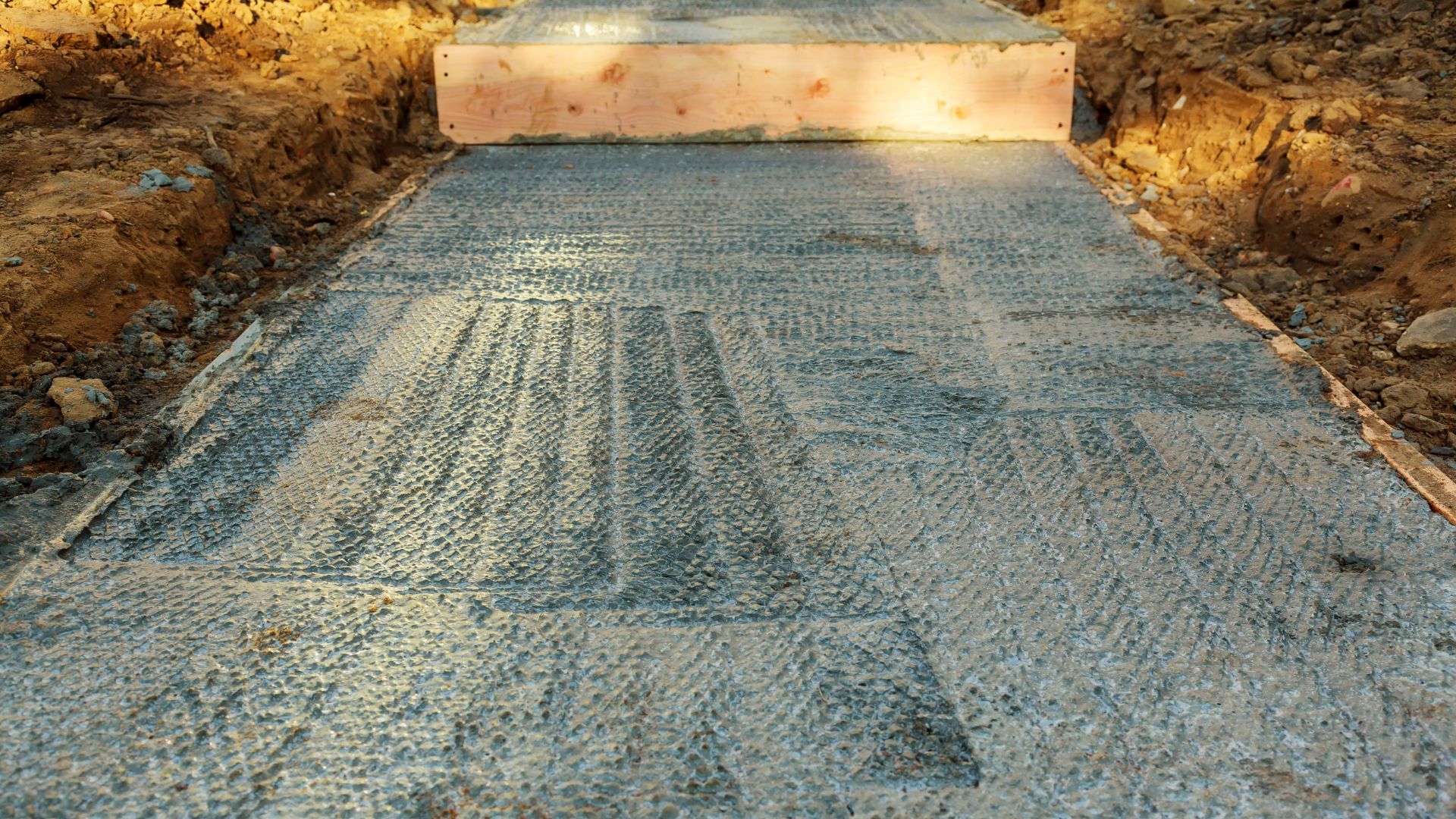How Do You Melt Ice Without Causing Damage to Concrete or Pavement?
Concrete pavements suffer in winter because of harsh weather. Freeze-thaw cycles, where moisture enters concrete pores, freezes, and expands, creating internal stress and cracking. This has always been a major concern for property owners.
Road salts and other deicing chemicals reduce surface ice. Although they prevent immediate risks, these chemicals promote concrete deterioration.
Engineers and transportation departments use numerous methods to safeguard concrete pavements in winter. Proper maintenance and finding a competent “paving company near me” are essential for concrete pavement durability and protection throughout winter.
Dangers of Freeze/Thaw Cycle On Concrete
Concrete and pavement are vulnerable to freeze-thaw cycles. Water expands into ice after freezing, causing concrete or pavement pressure. Pressure may cause microcracks and weaken the material. When temperatures rise, ice melts, and water returns to pores. The damage cannot be undonea, and repeated freeze-thaw cycles worsen structural integrity.
This can cause surface spalling, scaling, and concrete or pavement degradation, reducing its load-bearing capability and lifespan.
Salts accelerate damage during freeze-thaw cycle cracks and reduce durability. Correct design, building, and maintenance are necessary in cold climates due to freeze-thaw cycles' structural effects.
Melting Ice on Concrete & Pavement
| Use On | What To Use | Details | Sample Product |
|---|---|---|---|
| Concrete | Use a calcium chloride-based ice melter. | - They work fast even at -25°F1. | Snow Joe Melt-2-Go Pure Calcium Chloride Pellet Ice Melter. |
| - Avoid calcium chloride on asphalt. | |||
| - Can irritate pets |
| Use On | What To Use | Details | Sample Product |
|---|---|---|---|
| Asphalt | Use magnesium chloride-based ice melter. | - It acts quickly at -13°F. | Harris Kind Melt Pet Friendly Ice Melt |
| - Safe for concrete as well | |||
| - Safe for plants and animals |
| Use On | What To Use | Details | Sample Product |
|---|---|---|---|
| Will work for everything | Hybrid formula | - Combination of multiple chlorides. | Road Runner Ice Melt |
| Will work for everything | Calcium magnesium acetate (CMA) | - Won't damage plants, pavement, or lawns. | Snow Joe MELT30EB-BOX Premium Enviro Blend Ice Melter w/ CMA. |
Using Ice Melt: Common Errors
- Overapplication: Overusing ice melt is wasteful and ineffective. Apply at the product packaging's recommended rate. Excessive use can damage plants, concrete, and other surfaces.
- Mixing Different Products: Mixing ice melt brands is dangerous unless the manufacturer says so. Product mixing can create chemical reactions that limit efficacy or harm.
- Using the Wrong Type: Ice melts are for different temperatures and circumstances. Choose the correct type for your needs. Some are meant for extreme cold, while others are pet and plant-friendly.
- Not Pre-treating Surfaces: Preventing ice from sticking to surfaces using ice melt before a snowstorm makes removal easier. It's better to pre-treat than to melt snow and ice afterwards.
- Ignoring Safety Gear: Wear gloves and eye protection when applying ice melt. Precautions are needed since some ice melt products can irritate skin or eyes.
- Using on New Concrete: Using some ice melts on recently poured concrete surfaces may harm the curing process. Check product instructions for surface compatibility.
- Not Cleaning Up Residue: Cleaning away residue after ice melt is crucial. This can prevent surface damage and environmental hazards, especially if the product contains plant-harming chemicals.
- Inconsistently Applying: Apply ice melt evenly to avoid slips and falls. Spreaders ensure equal coverage across broad regions.
Importance of Ice Melting
- Ice on pavement can endanger pedestrians and drivers. Melting ice reduces slips, falls, and accidents.
- Wheelchair and walker users may be unable to use sidewalks and walkways due to ice accumulation.
- The pavement can be saved from possible long-term harm if the ice is melted.
- Roads covered with ice increase the risk of traffic jams.

Preserve Your Concrete And Pavement
Melting ice without damaging concrete pavement is crucial to ensuring public safety and infrastructure longevity. Ice buildup on pavements and pathways is extremely dangerous in areas where winter temperatures dip below freezing.
Equally important is ensuring that concrete pavement remains undamaged. Traditional de-icing treatments like rock salt can promote concrete deterioration. Therefore, it is critical to use alternative de-icing methods that are less harmful to both the environment and the concrete.
You can be sure your property will last long if you hire professional builders. Victoria Concrete & Paving offers expert service to guarantee top-notch results. Our team of professionals has over 20 years of expertise and can accomplish every project accurately and effectively. If you are a homeowner or company owner needing concrete or paving services, we are here to help.
Frequently Asked Questions
When is the best time to apply ice melt on concrete pavement?
Apply ice melt before a snowfall or when ice is first noticed. This proactive method prevents ice buildup, making it easier to remove.
How often should I reapply ice melt on concrete pavement?
Apply ice melt again as necessary, based on current weather conditions. Heavy precipitation or severely cold temperatures might require more frequent applications.
Can I use hot water to melt ice on concrete pavement?
Hot water can melt ice, although it may freeze quickly in freezing temperatures. Also, thermal shock from pouring hot water on a cold surface could damage concrete.
